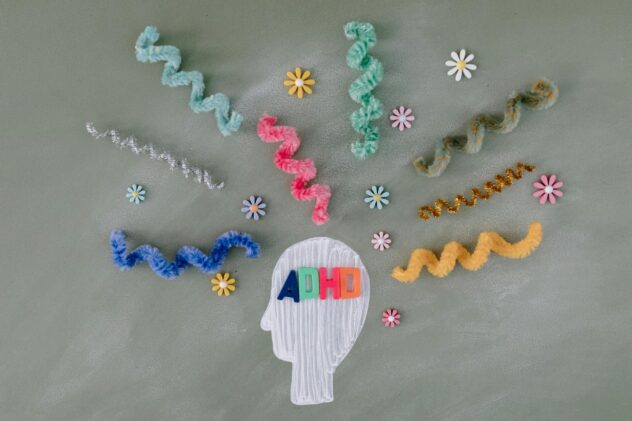What Is Stimming? The Science Behind It and Why It Matters
What is stimming? If you’ve ever caught yourself tapping a pen, bouncing your leg, or twirling your hair while pretending to listen in a meeting, congratulations. You’re stimming.
But what is stimming, really? For neurodivergent people, whether autistic, ADHD, or just wired a little differently, stimming (self-stimulatory behaviour) is more than just a habit. It’s an essential part of self-regulation, focus, and, let’s be honest, sometimes pure enjoyment.
And yet, society still treats it like some kind of glitch in the system, something to be “fixed.” Spoiler: it doesn’t need fixing. What is stimming if not a perfectly natural way to navigate the world?
Unlock peak brain performance with science-backed biohacks. Join free now & get your guide for just £4.99 (45% off)!

Let’s talk about stimming, why it matters, and how to embrace it, without breaking anything in the process.
What is Stimming, Anyway?
So what is it? The simple answer is this: it’s any repetitive movement, sound, or action that helps with emotional regulation, sensory management, or just feels really, really good.
Some examples of stimming include:
- Rocking, bouncing, or swaying
- Hand-flapping or finger-flicking
- Humming, repeating words, or throat-clearing
- Tapping, drumming, or clicking pens (the mortal enemy of silent libraries)
- Playing with textures, spinning objects, or fidgeting with absolutely anything within reach
Neurodivergent brains process the world a little differently. Some people stim to calm down, others to stay focused, and sometimes… just because it feels right. There doesn’t always have to be some deep, meaningful reason. Is stimming not a perfectly good way to exist?
What is Stimming Doing to Your Brain?
Despite what outdated therapy books might suggest, stimming isn’t a “bad habit.” It’s actually a built-in coping mechanism. What does stimming do on a neurological level? Turns out, a lot.
Dopamine Boost
Many stims trigger dopamine release, which helps with focus, motivation, and emotional regulation. That’s why ADHD brains love to stim, it’s their version of pressing the refresh button.
Sensory Processing Helper
Some neurodivergent brains take in too much sensory input, others not enough. Stimming helps balance the scales, either by calming things down or creating extra input when needed.
Stress Reduction
Ever rocked back and forth and felt instantly calmer? That’s because repetitive movements activate the parasympathetic nervous system, the body’s built-in chill-out mode.
So, what is stimming? It’s literally a self-soothing superpower. The only problem is that society didn’t get the memo.
What is Stimming and Why Does It Freak People Out?
Somewhere along the way, society decided that twirling your hair is cute, but hand-flapping is “weird.” The double standard is ridiculous.
The push to suppress stimming has been especially harmful for autistic people, many of whom have been taught to “mask” (aka hide their natural behaviours) just to fit in. The result? Burnout, exhaustion, and the overwhelming urge to scream into a pillow.
Instead of trying to suppress stimming, let’s talk about how to make it work in daily life.
What is Stimming in Action? Practical Ways to Embrace It
Not all stims fit every setting. If you’re in a packed boardroom, your need to pace might get a few confused looks. But that doesn’t mean you have to suppress it, you can adapt.
Hand and Finger Stims
- Use fidget toys, spinner rings, or textured fabrics
- Twiddle a paperclip or play with jewellery
- Click a pen (but maybe not in a library unless you enjoy making enemies)
Movement-Based Stims
- Rock in a chair or use a wobble cushion
- Bounce your foot under a desk
- Stretch or take pacing breaks if the space allows
Auditory and Vocal Stims
- Listen to looping music, white noise, or repetitive sounds
- Hum softly or repeat favourite words (to yourself, unless you want concerned glances)
- Play with sound apps that create rhythmic background noise
Visual and Tactile Stims
- Watch videos of kinetic sand, lava lamps, or oddly satisfying things
- Wear clothes with pleasing textures
- Doodle, trace patterns, or play with putty
What is Stimming at the End of the Day? Self-Care
At the end of the day, stimming if not a completely natural way of experiencing the world? It’s not something to “fix.” It isn’t a problem. It’s a part of who you are.
Instead of resisting it, embrace it. Find ways to stim that bring you joy, help you focus, or just feel good.
And if someone questions you? Just tell them it’s neuroscience. Nobody argues with science.
Join Our Community
Stimming is just one of the many ways neurodivergent brains navigate the world. Want to connect with others who just get it? Join our community for more insights, discussions, and support from people who understand. Let’s celebrate neurodivergence together.







